Treatment
References (Chapter 3)
- International Standards for Tuberculosis Care. The Hague: Tuberculosis Coalition for Technical Assistance; 2014.
- Health systems strengthening glossary [website]. Geneva: World Health Organization; 2016.
- A people-centred model of TB care. A blueprint for eastern European and central Asian countries, first edition.
6. Palliative care
Palliative care is the preventing and relieving of the suffering of people affected by TB during and after treatment and at the end-of-life.
5. Models of care for TB services
5.1 Models of care for all TB patients
Although traditionally patients with DR-TB were hospitalized for portions of, and sometimes all of, their treatment, recommendations on this have changed. With the increasing use of all-oral DR-TB treatment, patients with DR-TB should be treated whenever possible in an outpatient-based treatment programme similar to patients with DS-TB (60–62).
4. Health education and counselling for people affected with TB
This section focuses on a key recommendation on patient care and support by providing health education and counselling on the disease and treatment adherence to TB treatment (15, 16).

3. Care and support interventions to enable TB treatment adherence
Ensuring adherence to TB therapy is one of the important challenges for achieving a successful treatment outcome, particularly for patients with drug-resistant TB (DR-TB). This is because of the large number of medications, the frequent and serious adverse drug reactions, and the social and financial costs to patients related to TB treatment.
2. People-centred approach
In view of the high burden of disease, death and suffering associated with TB, Standard 9 of the International standards for tuberculosis care (1) states: “A patient-centred approach to treatment should be developed for all patients in order to promote adherence, improve quality of life, and relieve suffering. This approach should be based on the patient’s needs and mutual respect between the patient and the provider”.
Pagination
- Page 1
- Next page

 Feedback
Feedback